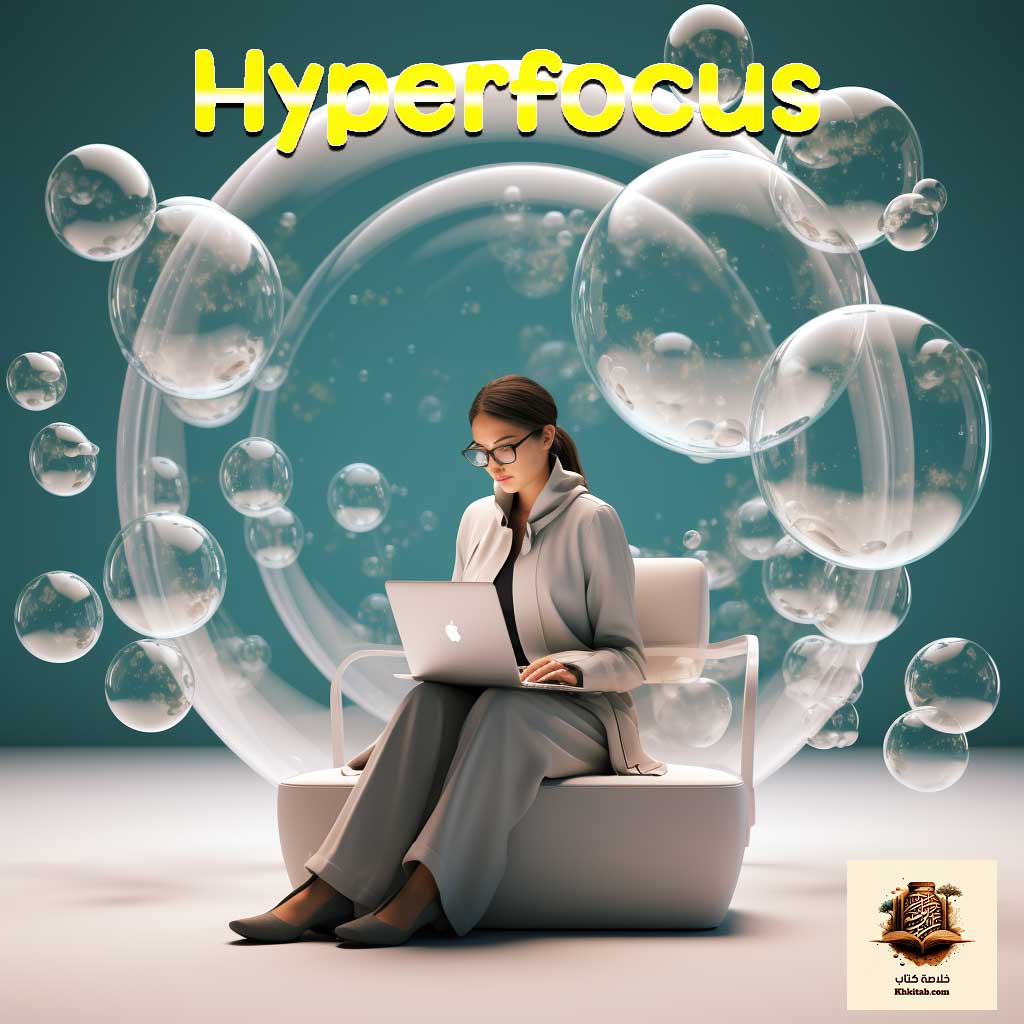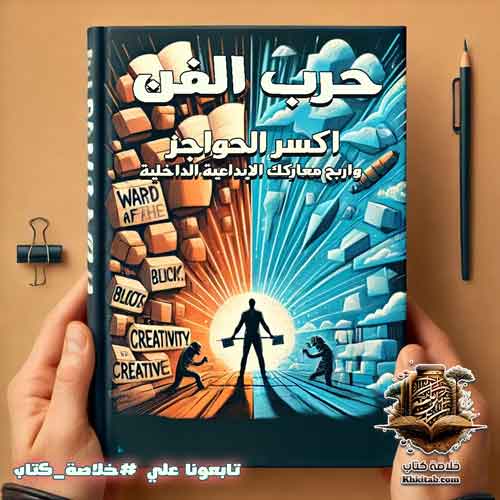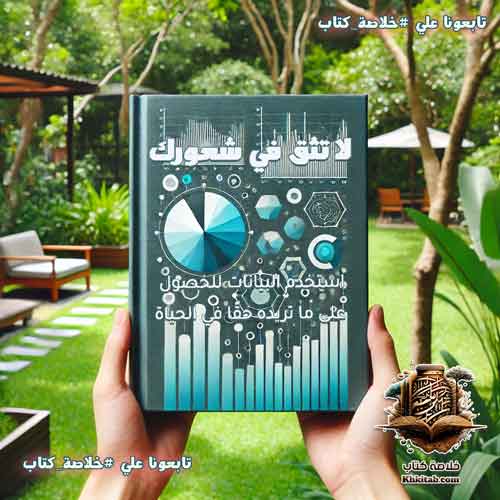Hyperfocus: How to Work Less to Achieve More Book Summary

In an age riddled with constant distractions and interruptions, finding the mental serenity to accomplish what truly matters can sometimes seem elusive. Do you often feel that notifications, apps, and the demands of daily life are pulling you away from your goals? If so, Chris Bailey’s “Hyperfocus: How to Work Less to Achieve More” might be the guide you’ve been seeking.
This book is not just a conventional treatise on time management; it’s an exploration into harnessing the power of focus to achieve bigger things. Bailey offers a fresh perspective on how to deal with the daily distractions and interruptions surrounding us and shares strategies to enhance our ability to focus and think more profoundly.
Throughout its pages, you’ll discover that effective focus isn’t just a skill to be learned but a lifestyle to be adopted. You’ll learn how to adeptly switch between states of hyperfocus and scatterfocus, achieving the perfect balance between productivity and creativity.
In addition to concepts and strategies, the book also presents practical exercises and activities that you can integrate into your daily life to bolster your focusing capabilities and achieve your objectives more efficiently.
إقرأ أيضا:The Complete Idiot’s Guide to Extreme Weather: Preparing and Adapting to Face Extreme Climatic ChallengesIn conclusion, “Hyperfocus: How to Work Less to Achieve More” is a rich guide for those wishing to refine their focusing prowess in an increasingly distracting world.
How Does the Digital Age Affect Our Ability to Focus?
In “Hyperfocus: How to Work Less to Achieve More” by Chris Bailey, one of the central discussions revolves around the modern challenge of distraction, particularly in the context of our digital age. With the surge in digital technology, our lives have become inundated with an array of tools and platforms that, while designed to enhance communication and productivity, often act as consistent sources of distraction.
Every ping from a smartphone, every email notification, and every social media alert competes for our attention, fragmenting our focus. This continuous tug-of-war has profound implications. Bailey emphasizes that our brains are not wired for the multi-tasking that these digital platforms encourage. When we try to juggle multiple tasks, our ability to give any single task our undivided attention diminishes. This scattered attention leads not only to decreased productivity but also to a sense of perpetual mental exhaustion.
Further, while these distractions provide short-term gratification, they can interfere with our long-term goals. For instance, while it feels immediately rewarding to check a new message or scroll through a social media feed, such actions often pull us away from more meaningful work that requires sustained concentration.
But it’s not all bleak. Bailey also acknowledges the benefits of the digital era. The key, he suggests, is to become more intentional with how we use these tools. By setting boundaries, curating notifications, and scheduling dedicated times for deep work without digital interruptions, we can reclaim our focus and harness the true potential of the digital age.
In essence, the digital age presents both a challenge and an opportunity. By understanding the nature of modern distractions and their impact on our focus, we can develop strategies to navigate this new landscape, achieving a balance between connectivity and concentration.
Self-development – Book Summary (khkitab.com)
How Does the Science of Attention Explain Our Brain’s Processing and Limits?
In the insightful book “Hyperfocus: How to Work Less to Achieve More”, Chris Bailey delves deeply into the intricate realm of attention science, providing readers with a comprehensive understanding of how our brain processes attention and the boundaries that confine our focus.
Attention, as Bailey elucidates, is not a limitless resource. Contrary to the popular belief of multitasking prowess, our brains are actually hardwired for singularity. This means that every time we shift our focus from one task to another, there’s an inherent cognitive cost. This cost, often overlooked, can lead to mental fatigue and reduced efficiency in the tasks we undertake.
The brain’s attentional mechanism can be likened to a spotlight. Just as a spotlight illuminates a specific area while leaving others in the dark, our focus shines intensely on a singular task while relegating others to the periphery. While this mechanism serves us well in situations that demand deep concentration, it also indicates our vulnerability to distractions, especially in today’s digital age where a plethora of stimuli constantly vie for our spotlight of attention.
Bailey emphasizes the importance of understanding our brain’s natural inclinations. By being aware of our cognitive strengths and limitations, we can better strategize our work routines, minimize distractions, and maximize periods of deep, unbroken focus. For instance, harnessing our brain’s peak attentional periods and aligning them with our most demanding tasks can lead to enhanced productivity and a richer quality of output.
In conclusion, the science of attention is a pivotal topic for anyone striving for productivity and efficiency. As Bailey outlines in “Hyperfocus”, by understanding the mechanics and limits of our brain’s attentional system, we can work in harmony with it, optimizing our performance and achieving more in less time.
Our Facebook Page – Book Summary
How Does Hyperfocus Empower Deep Concentration and Task Absorption?
In “Hyperfocus: How to Work Less to Achieve More”, Chris Bailey introduces a transformative concept that has the potential to reshape our understanding of productivity: hyperfocus. This term refers to a heightened state of deep concentration where an individual becomes completely engrossed in a single task, blocking out all potential distractions.
The hyperfocus state stands in stark contrast to our modern age of distraction. With countless notifications, emails, and social media updates vying for our attention, the ability to enter a state of hyperfocus becomes invaluable. In this deeply immersed state, not only do we achieve a superior quality of work, but we also find that our creativity and problem-solving abilities are significantly amplified.
Bailey emphasizes that hyperfocus isn’t just about concentrating harder or pushing oneself to the extreme. It’s about understanding the rhythms and capacities of our mind, creating the right environment, and leveraging techniques that help channel our attention in a laser-focused manner. This means decluttering our workspace, turning off unnecessary notifications, and strategically setting aside dedicated periods for deep work.
Moreover, Bailey touches upon the mental and emotional benefits of hyperfocus. Beyond just work productivity, entering this state can offer a sense of fulfillment, purpose, and even tranquility. It’s a state where the noise of the outside world dims, and one’s relationship with the task at hand becomes almost meditative.
To truly leverage the power of hyperfocus, it’s essential to recognize its value and actively cultivate the conditions that promote it. In a world saturated with distractions, achieving hyperfocus is not just about doing more work in less time; it’s about immersing oneself deeply, understanding intricacies, and producing outcomes that are both meaningful and exceptional.
In essence, “Hyperfocus: How to Work Less to Achieve More” presents a roadmap for those seeking to harness their attention in an age of constant distraction, emphasizing the transformative power of deep, unbroken concentration.
How Can Hyperfocus Elevate Your Productivity and Creativity?
The concept of hyperfocus, as elaborated in the insightful book “Hyperfocus: How to Work Less to Achieve More” by Chris Bailey, introduces a revolutionary approach to enhancing productivity. At its core, hyperfocus refers to an intense state of concentration where an individual is fully absorbed in a single task, effectively sidelining all potential distractions.
In today’s world, riddled with incessant notifications, constant email alerts, and a barrage of social media updates, achieving a state of hyperfocus can seem nearly impossible. Yet, it’s precisely in this chaotic environment that its benefits become most apparent.
- Enhanced Productivity: When you’re fully immersed in a task through hyperfocus, you accomplish tasks faster and with greater efficiency. Without the regular interruptions that fragment our attention, we can complete tasks in a single, uninterrupted stretch, reducing the time and effort it usually takes when we’re distracted.
- Boosted Creativity: By channeling all our mental resources towards one activity or thought process, we tap into deeper wells of creativity. The mind, free from external distractions, can make connections it typically wouldn’t, leading to innovative solutions and ideas.
- Increased Quality of Work: With undivided attention on a task, the quality of the outcome invariably improves. Mistakes that arise from divided attention or multitasking are minimized, leading to outputs that are well-thought-out and polished.
- Emotional and Mental Well-being: Beyond the tangible outputs, hyperfocus can also lead to a sense of fulfillment and satisfaction. Diving deep into a task can be therapeutic, offering a respite from the constant buzz of the digital world. The satisfaction derived from completing a task with your full attention offers a boost to one’s self-esteem and confidence.
- Learning and Retention: When you study or try to understand a new concept in a state of hyperfocus, your ability to grasp and retain that information improves significantly. This is because all your cognitive resources are dedicated to this singular task, enhancing comprehension and memory retention.
In conclusion, mastering hyperfocus isn’t just about working faster or more efficiently. It’s about fully engaging with a task, tapping into our deepest cognitive reserves, and producing outcomes that are superior in quality and innovation. In a world where distractions are the norm, cultivating the ability to achieve hyperfocus becomes a superpower.
How Can You Achieve Hyperfocus for Enhanced Productivity and Creativity?
In a world dominated by distractions – from incessant smartphone notifications to the constant hum of background chatter – achieving a state of pure concentration might seem elusive. However, the book “Hyperfocus: How to Work Less to Achieve More” introduces a compelling argument for the immense value of such focused states, as well as practical steps to harness this power. So, how can you set the stage to enter this profound state of hyperfocus?
- Control Your Environment: Begin by eliminating potential distractions. This may mean silencing your phone, using noise-cancelling headphones, or creating a dedicated workspace. The environment, both physical and digital, plays a pivotal role in shaping our focus.
- Prioritize Tasks: Understand the difference between ‘busy work’ and tasks that genuinely require deep focus. By discerning between the two, you can allocate time blocks where you’ll commit to hyperfocusing.
- Breaks are Essential: Paradoxically, to maintain a prolonged state of hyperfocus, one must take deliberate breaks. The Pomodoro Technique, for instance, suggests 25-minute focus intervals followed by short breaks.
- Practice Mindfulness and Meditation: These techniques are not just for relaxation. They are instrumental in training the mind to ward off distractions and stay present in the moment. Over time, meditation can enhance your ability to slip into hyperfocus more readily.
- Limit Multitasking: While multitasking may give the illusion of productivity, it’s often the nemesis of hyperfocus. Dedicate yourself to one task at a time, giving it your undivided attention.
- Set Clear Goals: Before diving into a task, outline what you hope to achieve. This clarity will serve as a guiding light, preventing you from veering off course.
- Harness Technology: Tools like Focus@Will or apps that limit your social media usage can be incredibly beneficial. Instead of allowing technology to deter your focus, make it work in your favor.
In essence, hyperfocus isn’t merely about working harder; it’s about working smarter. It’s about fully immersing oneself in a task, reaching into the depths of our cognitive capabilities, and producing results of unparalleled quality and innovation. In the vast sea of modern distractions, the ability to hyperfocus emerges as a critical skill for personal and professional growth.
How Does Scatterfocus Boost Creativity and Problem-solving?
In the quest for peak productivity, “Hyperfocus: How to Work Less to Achieve More” introduces not just the intense, laser-sharp concentration that the title suggests but also its counterintuitive counterpart, “Scatterfocus.” But what is scatterfocus, and why does it matter in the realm of productivity?
1. Understanding Scatterfocus:
At its core, scatterfocus refers to deliberate mind-wandering. It’s those moments when we allow our mind to drift away from the task at hand. Instead of viewing these moments as lapses in productivity, author Chris Bailey highlights them as essential periods for reflection, creativity, and problem-solving.
2. Modes of Scatterfocus:
There are several ways to engage in scatterfocus:
- Task-negative mode: This is when you let your mind roam free, not focused on any particular task.
- Task-positive mode: While performing a habitual task that doesn’t demand much attention, such as walking or washing dishes, the brain can wander and generate ideas.
3. Boosting Creativity:
Scatterfocus provides the brain a break from its usual patterns, enabling it to form new connections and generate novel ideas. By allowing thoughts to float freely, we often stumble upon innovative solutions or approaches that wouldn’t have surfaced in a hyperfocused state.
4. Problem-Solving Advantages:
Complex issues often require out-of-the-box thinking. Scatterfocus allows the mind to approach problems from various angles, tapping into a broader range of knowledge and experiences. It’s during these moments of mind-wandering that “Eureka” moments often occur.
5. The Balance with Hyperfocus:
Hyperfocus and scatterfocus are two sides of the same coin. While hyperfocus allows for deep work and concentrated efforts, scatterfocus offers the brain the relaxation and freedom it needs to innovate and reflect. Integrating periods of both can lead to optimized productivity.
6. Practical Tips for Engaging in Scatterfocus:
- Schedule short breaks during work to allow for mind-wandering.
- Engage in activities that don’t require intense concentration, like doodling or taking a nature walk.
- Keep a notepad handy to jot down any ideas or insights that arise during these periods.
In conclusion, while the value of deep, undistracted work cannot be understated, the importance of allowing our minds to wander, to drift, and to daydream is equally crucial. “Hyperfocus: How to Work Less to Achieve More” suggests that striking the right balance between hyperfocus and scatterfocus can pave the way for not only increased productivity but also enhanced creativity and superior problem-solving abilities.
How Can Balancing Hyperfocus and Scatterfocus Elevate Your Productivity and Creativity?
In the realm of productivity and peak performance, it’s not just about putting in more hours but making those hours count. The book “Hyperfocus: How to Work Less to Achieve More” by Chris Bailey introduces us to two complementary states of mind: Hyperfocus and Scatterfocus. Understanding and balancing these states can provide a path to a more productive and creative self. Here’s a detailed exploration:
1. Understanding Hyperfocus:
Hyperfocus is a state of flow where one is entirely absorbed in a task, cutting off external distractions to achieve deep work. This state is essential for tasks that require concentrated effort, meticulous detail, or time-sensitive output.
Benefits of Hyperfocus:
- Enhanced performance on complex tasks.
- Faster achievement of goals due to reduced distraction.
- A sense of fulfillment and accomplishment.
2. Embracing Scatterfocus:
On the other side, we have Scatterfocus, a deliberate mind-wandering state. Rather than viewing it as counterproductive, Scatterfocus can be a source of spontaneous creativity, providing our minds the freedom to explore, reflect, and connect unrelated ideas.
Advantages of Scatterfocus:
- Boosts creativity by allowing the brain to form new neural connections.
- Provides a much-needed mental break, reducing the risk of burnout.
- Encourages introspection and self-awareness.
3. Achieving the Balance:
To strike a balance between Hyperfocus and Scatterfocus means capitalizing on each state’s strengths. It’s like using Hyperfocus for execution and Scatterfocus for innovation.
Practical Steps to Find the Balance:
- Set Clear Boundaries: Allocate specific times for deep work where you employ hyperfocus. Ensure your environment is free from potential distractions during these periods.
- Scheduled Downtime: Incorporate deliberate breaks to let your mind wander. Activities like walking, doodling, or even daydreaming can activate Scatterfocus.
- Reflect Regularly: Journaling can be an excellent way to engage with Scatterfocus intentionally, providing an outlet for your wandering thoughts and creative ideas.
4. The Interplay for Success:
The synergy of Hyperfocus and Scatterfocus allows for a harmonious cycle where focused work is complemented by periods of reflection and creative thinking. This cycle can lead to not just completing tasks efficiently but also coming up with innovative solutions and ideas.
In conclusion, while the modern world pushes us towards constant engagement and endless multitasking, it’s crucial to recognize the power of both focus and deliberate distraction. By finding the right balance between Hyperfocus and Scatterfocus, as suggested in “Hyperfocus: How to Work Less to Achieve More”, individuals can harness the best of both worlds, maximizing productivity while fostering a breeding ground for creativity.
How Can We Overcome Digital Distractions to Achieve Hyperfocus?
In the modern digital age, achieving a state of hyperfocus can seem elusive. The constant barrage of notifications, emails, and apps can fragment our attention and prevent us from fully immersing ourselves in our tasks. “Hyperfocus: How to Work Less to Achieve More” by Chris Bailey offers enlightening insights and practical advice on overcoming these challenges. Let’s delve into the methods and techniques recommended to tame digital distractions:
1. Awareness is the First Step:
Before making changes, it’s essential to understand and acknowledge how much digital distractions are affecting our productivity. Spending a day documenting every time you pick up your phone or switch to a different application can be eye-opening.
2. Design Your Digital Environment:
Just as a cluttered desk can hamper productivity, a cluttered digital workspace can be just as detrimental. Organize your desktop, have a clean homepage, and regularly declutter your device from unused apps and files.
3. Scheduled Check-ins:
Instead of being reactive to every beep and ping, set specific times to check emails and notifications. This prevents constant task-switching, allowing your brain to remain in a hyperfocused state for more extended periods.
4. Use Technology to Fight Technology:
Leverage apps and tools like “Focus@Will” for concentration music or “Forest” to prevent phone usage. Features like ‘Do Not Disturb’ mode or dedicated apps that block distracting sites can also be valuable.
5. Prioritize Tasks:
Having a clear understanding of what needs to get done can help fend off distractions. Using tools like the Eisenhower Box or the Pomodoro Technique can be incredibly beneficial in structuring work and breaks.
6. Digital Detox:
Take regular breaks from digital devices. This could be for a few hours in the evening or maybe even a full day over the weekend. Such breaks can refresh the mind and reduce the impulse to constantly check devices.
7. Mindful Consumption:
Not all digital content is created equal. Being more deliberate and selective about the information we consume—whether it’s news, social media, or apps—can reduce the cognitive load and make space for meaningful content.
8. Physical Environment Matters:
A workspace designed for focus can support digital focus too. Having a dedicated space for work, ideally free from digital distractions, can significantly enhance productivity.
9. Educate Those Around You:
Let colleagues, friends, and family know about your focus periods. They’ll be less likely to interrupt you, respecting your dedicated focus time.
10. Continuous Review and Adaptation:
Digital landscapes are ever-evolving. What works now might not be as effective in the future. Regularly review your habits, tools, and techniques, adjusting as necessary to maintain a state of hyperfocus.
In conclusion, while the world of digital connectivity offers many advantages, it also presents challenges in maintaining focused attention. Drawing from the insights of “Hyperfocus: How to Work Less to Achieve More,” we can employ various strategies to tame digital distractions, allowing us to harness the full potential of hyperfocus and drastically improve our productivity and work quality.
Why Are Breaks Essential for Enhancing Focus and Relaxation?
In the hustle and bustle of today’s fast-paced world, continuous work might seem like the most productive approach. However, the book “Hyperfocus: How to Work Less to Achieve More” by Chris Bailey delves deep into the science of attention, productivity, and the power of taking deliberate breaks. Here’s an expansive look into the importance of breaks and their role in enhancing both focus and relaxation:
- Mental Reset: Just as a computer might need occasional rebooting, our minds benefit from breaks to refresh and clear out cognitive clutter. This helps in returning to tasks with a rejuvenated perspective and sharper focus.
- Prevention of Burnout: Continuous work without breaks can lead to burnout and decreased productivity in the long run. Breaks serve as a protective measure, ensuring sustained performance.
- Boosting Creativity: Breaks, especially those involving some form of physical activity or change of scenery, can stimulate different parts of the brain, often leading to unexpected and creative solutions to problems.
- Decision Fatigue Reduction: Making decisions throughout the day can wear us out. Regular breaks can mitigate the effects of decision fatigue, leading to better quality choices.
- Enhanced Memory: Neuroscientific research indicates that breaks can improve information retention and understanding. This is particularly true if one reviews the information right before and after a break.
- Emotional Balance: Continuous work, especially under stress, can heighten emotional reactions. Breaks help in regulating emotions, allowing for more measured and rational responses.
- Physical Health: It’s not just about mental well-being. Physical breaks, even brief ones, can combat the ill effects of prolonged sitting, promoting better circulation and postural health.
- Attention Restoration: Nature breaks, where one engages with a natural environment, can rapidly restore attention and focus, according to Attention Restoration Theory. Even looking at pictures of nature can have this effect!
- Promotion of Healthy Habits: Breaks are opportunities to hydrate, grab a nutritious snack, or practice deep breathing. These seemingly small actions compound over time, promoting overall well-being.
- Increased Motivation: After a break, the return to work can be with renewed energy and motivation, making tasks seem less daunting and more achievable.
In conclusion, while it might seem counterintuitive, integrating regular breaks into our workflow is not about working less but working smarter. As “Hyperfocus: How to Work Less to Achieve More” aptly highlights, it’s about understanding our cognitive rhythms and harnessing them effectively to optimize focus, creativity, and relaxation. So the next time you’re deep in work, remember the power of pausing. It might just be the productivity boost you need!
How Can Building a Productive Routine Foster Periods of Hyperfocus?
In the modern age, where distractions are just a click away, nurturing our ability to focus is paramount. Chris Bailey’s “Hyperfocus: How to Work Less to Achieve More” dives into the intricacies of attention management and provides compelling insights on how to harness our mental energies efficiently. One of the book’s pivotal suggestions is the importance of structuring a daily routine that prioritizes tasks and nurtures periods of hyperfocus. Here’s a breakdown of the book’s insights into creating a productive routine:
- Task Prioritization: Start by distinguishing between what is urgent and what is important. Not everything that demands your attention is worth it. By prioritizing tasks that align with your goals, you can allocate periods of hyperfocus to them.
- Time Blocking: This technique involves allocating specific blocks of time for specific activities. By dedicating certain hours exclusively for demanding tasks, you ensure that you’re in the best mental state to tackle them.
- Batching Similar Tasks: Grouping similar tasks together can minimize the cognitive load of switching between different kinds of activities. This makes the transition between tasks smoother and maintains a steady flow of focus.
- Intentional Breaks: Just as crucial as periods of focus are the moments of rest. These breaks can be strategically placed to act as mental resets, ensuring that each session of hyperfocus is as potent as the one before it.
- Eliminating Distractions: A conducive environment is vital. This means turning off unnecessary notifications, creating a clutter-free workspace, and communicating to others about your focus periods to prevent interruptions.
- Mindful Task Engagement: When you’re working on a task, immerse yourself fully. This means not just engaging with the task at hand, but also being aware of your mental state, recognizing when your focus is waning, and taking steps to recalibrate.
- Daily Reflection: At the end of the day, take a few moments to reflect. What went well? What could be improved? This reflection helps in continuously refining your routine for better productivity.
- Consistency is Key: Establishing a routine is not a one-time task. It requires consistent effort. The more you stick to your structured routine, the more natural it will become, eventually turning into a habit.
- Flexibility: While consistency is crucial, it’s equally important to be adaptable. If something isn’t working or if unexpected tasks arise, adjust your routine accordingly. A rigid routine can sometimes be counterproductive.
- Personalization: What works for one individual might not work for another. It’s essential to understand your rhythms, energy peaks, and troughs, and customize your routine to fit your unique needs.
In conclusion, “Hyperfocus: How to Work Less to Achieve More” emphasizes that the key to productivity isn’t just about working hard, but about working smart. By cultivating a daily routine that prioritizes and structures tasks effectively, we can create pockets of intense focus, or hyperfocus, leading to increased efficiency and success in our endeavors. Building a routine that caters to your individual needs and is flexible enough to accommodate the uncertainties of daily life is the foundation of a truly productive lifestyle.
How Can Mastering Focus Lead to Personal Well-being and Career Advancements?
In a world incessantly bombarded by distractions, maintaining focus has become both a challenge and an essential skill. Chris Bailey’s “Hyperfocus: How to Work Less to Achieve More” delves deep into the realm of attention management, emphasizing the importance of mastering focus. Beyond immediate productivity gains, the book elucidates how such a mastery can yield long-term rewards ranging from enhanced personal well-being to significant career advancements. Let’s explore these broader benefits:
- Enhanced Mental Health: One of the cornerstones of “Hyperfocus” is the idea that a distracted mind can lead to increased stress levels and anxiety. By honing your ability to focus, you can more effectively filter out unnecessary noise, reducing feelings of overwhelm and boosting overall mental wellness.
- Improved Decision Making: When you train your mind to concentrate on a single task or thought process, you’re better equipped to make rational, informed decisions. Over time, this skill can position you as a trusted decision-maker in personal and professional realms.
- Quality Over Quantity: Bailey emphasizes that by achieving a state of hyperfocus, you can produce higher-quality work in less time. This doesn’t just mean meeting deadlines but excelling in what you deliver, setting you apart in any professional setting.
- Career Growth: In professional environments where many juggle tasks ineffectively, someone who can genuinely focus stands out. This unique skill can lead to recognition, promotions, and opportunities that others might miss.
- Deepened Relationships: On the personal front, the ability to be “present” and genuinely listen strengthens relationships. By avoiding the pull of distractions during conversations, you foster deeper connections with loved ones.
- Time Management: Hyperfocus equips individuals with the ability to discern between urgent and essential tasks, leading to better time allocation and a balanced life. This equilibrium can pave the way for personal pursuits and hobbies, enriching one’s life experience.
- Lifelong Learning: A focused mind is a curious one. By mastering attention management, individuals are better positioned to dive deep into subjects, fostering a love for learning and personal growth.
- Boosted Creativity: Contrary to the myth of the “scattered creative genius,” Bailey argues that focus can enhance creativity. By immersing oneself deeply into a subject, innovative ideas and solutions often surface.
- Resilience in Adversity: Challenges are an inevitable part of life. Those with a trained focus have the ability to remain calm, assess situations rationally, and navigate difficulties with a clear mind.
- Greater Life Satisfaction: Ultimately, mastering focus leads to a life where one’s energies are channeled purposefully. This sense of purpose and achievement often translates into heightened life satisfaction.
In conclusion, while “Hyperfocus: How to Work Less to Achieve More” presents actionable strategies for enhancing immediate productivity, its true value lies in shedding light on the long-term rewards of mastering focus. Whether it’s advancing in one’s career, nurturing personal relationships, or fostering mental well-being, the benefits of honed attention management are profound and far-reaching.
How Can Tools and Techniques Enhance Your Ability to Achieve Hyperfocus?
In today’s digitally-driven world, maintaining sharp attention and fostering hyperfocus can seem like a herculean task. But with the right strategies, it’s entirely possible. Chris Bailey’s “Hyperfocus: How to Work Less to Achieve More” delves into a variety of tools and techniques designed to help readers enter a state of profound concentration. Below, we’ll unpack some of these valuable insights:
- Digital Detox: Before diving into digital tools, it’s vital to understand the importance of occasionally distancing oneself from screens. Scheduled breaks from digital devices can reduce mental clutter and help rejuvenate focus.
- Pomodoro Technique: Named after the tomato-shaped timer that was originally used to track the process, this method involves working intensively for 25 minutes followed by a 5-minute break. These intervals are known as “pomodoros.” The idea is that the timer creates a sense of urgency, which can prevent procrastination and maintain high levels of focus.
- Mindfulness and Meditation Apps: Apps like Calm and Headspace can help train your mind to remain present. Through guided meditation and breathing exercises, these apps can be invaluable for those looking to develop the skill of hyperfocus.
- Task Management Software: Applications such as Trello or Todoist allow users to prioritize tasks and break them down into manageable chunks. By having a clear vision of what needs to be accomplished, it’s easier to allocate dedicated focus time to each task.
- Distraction Blockers: Tools like Freedom or Cold Turkey can block distracting websites during work hours, ensuring you remain on task.
- Environmental Control: Bailey emphasizes the importance of controlling one’s environment. This might involve noise-cancelling headphones, the right lighting, or even just a clean workspace. The key is to find what environment works best for your personal focus.
- Regular Reflection: Setting aside regular periods to review and reflect on your work can ensure you’re always aligned with your goals. This regular check-in can also allow you to tweak and adjust your strategies for even greater hyperfocus in the future.
In conclusion, while our world is full of potential distractions, tools and methodologies do exist that can significantly aid in achieving and maintaining hyperfocus. Chris Bailey’s “Hyperfocus: How to Work Less to Achieve More” offers a comprehensive guide to harnessing these tools for enhanced productivity. Whether you’re a student, a professional, or just someone looking to make the most out of their time, understanding and implementing these techniques can be a game-changer.
How Can You Strategically Plan for Hyperfocus?
In today’s fast-paced world, finding uninterrupted focus or achieving what is termed as ‘hyperfocus’ is becoming increasingly elusive. In the book, “Hyperfocus: How to Work Less to Achieve More,” Chris Bailey provides a comprehensive road map for those striving to harness their attention and dive deep into their work. Here are some central themes and actionable insights from the book:
- Understanding Hyperfocus: Before aiming to achieve hyperfocus, it’s essential to grasp what it means. Bailey defines it as a state of elevated concentration where one is fully absorbed in the task at hand, resulting in increased productivity and creativity.
- Limiting Distractions: One of the primary barriers to hyperfocus is our ever-present digital distractions. Bailey suggests setting specific times to check emails or social media and using apps to block distracting sites during work periods.
- The Role of Environment: A conducive environment is crucial for cultivating hyperfocus. This could mean decluttering your workspace, investing in noise-cancelling headphones, or even having specific spots designated for particular types of work.
- Task Management: Instead of multi-tasking, which can diminish our capacity to concentrate, Bailey champions single-tasking. He emphasizes breaking tasks into manageable parts and allocating specific times to each, ensuring your full attention is dedicated to one task at a time.
- Mindful Breaks: Counterintuitively, to achieve hyperfocus, we also need to integrate breaks. These aren’t just any breaks but intentional periods where you disengage from work and indulge in activities that genuinely relax your mind, preparing it for the next hyperfocus session.
- Cognitive Capacities: Bailey touches upon the importance of understanding our cognitive rhythms. Recognizing when during the day you’re naturally more alert can be crucial in scheduling tasks that require deep concentration.
- The Bigger Picture: Regularly stepping back and reviewing your goals and priorities ensures that you channel your hyperfocus towards activities that align with your broader objectives, avoiding wasted energy on less significant tasks.
- Commitment: Lastly, achieving hyperfocus is not a one-time event but a commitment. Regularly training your mind, akin to muscle training, helps you get better at entering this state at will.
In conclusion, while our environment increasingly vies for our attention, “Hyperfocus: How to Work Less to Achieve More” offers a practical blueprint for those wanting to master their concentration and delve into deeper realms of productivity. Whether you’re a student, a professional, or anyone aiming to get the best out of their time, understanding and implementing these strategies can lead to transformative results.
What Are the Steps to Achieve Hyperfocus?
In our fast-paced digital age, achieving a state of hyperfocus seems like an elusive goal. Chris Bailey’s “Hyperfocus: How to Work Less to Achieve More” offers an invaluable blueprint for those seeking to maximize their attention and productivity. Let’s delve into the primary steps outlined in the book to harness this state of heightened concentration:
- Understanding Hyperfocus: Before aiming for hyperfocus, one must comprehend its essence. Bailey defines it as an intense state of concentration where an individual becomes wholly engrossed in a task, leading to amplified productivity and creativity.
- Minimize Distractions: One of the significant barriers to hyperfocus is constant digital distractions. Bailey recommends designating specific times for checking emails or social media and using apps that block distracting sites during work sessions.
- Crafting the Right Environment: Your surroundings play a crucial role in fostering hyperfocus. This could mean organizing your workspace, using noise-canceling headphones, or even having specific locations designated for different kinds of tasks.
- Task Management: Instead of multitasking, which can dilute our focus, Bailey encourages tackling one task at a time. He emphasizes breaking tasks into manageable parts and allocating specific time slots for each, ensuring you give your undivided attention to one task at a time.
- The Power of Breaks: Paradoxically, to achieve hyperfocus, integrating breaks is also essential. And not just any breaks – purposeful periods where you disconnect from work and engage in activities that genuinely rejuvenate your mind, priming it for the next hyperfocus session.
- Cognitive Rhythms: Bailey touches upon the importance of understanding our cognitive rhythms. Recognizing the times you’re naturally more alert during the day can be pivotal in scheduling tasks requiring deep concentration.
- Big Picture Vision: Periodically revisiting and reviewing your goals and priorities ensures that your hyperfocus is directed towards activities aligning with your overarching objectives, avoiding the expenditure of energy on less significant tasks.
- Commitment: Ultimately, achieving hyperfocus isn’t a one-time event but a commitment. Regularly training your mind, akin to exercising muscles, assists you in better accessing this state when desired.
In conclusion, as our environment increasingly vies for our attention, “Hyperfocus: How to Work Less to Achieve More” provides a practical roadmap for those looking to master their concentration and immerse deeply into productive endeavors. Whether you’re a student, a professional, or anyone aiming to make the most of their time, understanding and implementing these strategies can lead to transformative outcomes.
What Are the Benefits of Scatterfocus, as Elucidated in “Hyperfocus: How to Work Less to Achieve More”?
Chris Bailey, in his groundbreaking book “Hyperfocus: How to Work Less to Achieve More,” introduces not only the idea of “hyperfocus” but also its counterpoint, which he refers to as “scatterfocus.” While hyperfocus is about immersing oneself deeply in a task, scatterfocus is about deliberately letting your mind wander. Surprisingly, scatterfocus is not mere daydreaming but has its unique set of benefits:
- Enhanced Creativity: Allowing the mind to wander can lead to unexpected and novel connections. Ideas that seem unrelated can come together in innovative ways, giving birth to new perspectives and solutions.
- Planning and Goal Setting: Scatterfocus gives the brain an opportunity to shift from the present moment to the future. This mode of thinking allows for introspection, setting new goals, and planning for future tasks.
- Processing Information: When we’re constantly consuming information, we don’t always have the opportunity to process and make sense of it. Scatterfocus allows the brain the necessary time to connect the dots and form a coherent understanding.
- Emotional Regulation: Scatterfocus can act as a form of mental break, helping in reducing stress and anxiety. It allows individuals to process emotions, leading to improved emotional well-being.
- Memory Consolidation: Our minds consolidate and reinforce newly acquired information when we let them drift. This enhancement of memory can be particularly beneficial for students and lifelong learners.
- Increased Productivity: Ironically, periods of deliberate mind-wandering can lead to increased productivity. Once you return to a task after a scatterfocus break, you often approach it with renewed energy and clarity.
- Reinforcement of Self-identity: Scatterfocus provides moments of introspection, allowing individuals to reflect on personal experiences, values, and beliefs, thus reinforcing their sense of self.
- Rejuvenation: Just as physical rest is crucial after exertion, mental breaks are essential for rejuvenating the mind. Scatterfocus offers this mental reprieve, ensuring sustained cognitive performance.
In conclusion, while our society often champions the virtues of sharp, relentless focus, Chris Bailey’s “Hyperfocus: How to Work Less to Achieve More” reminds us of the importance of balancing this with intentional periods of scatterfocus. Embracing both these modes of attention ensures not only heightened productivity but also holistic mental well-being.
What Are the Steps to Achieve Deliberate Scatter Focus as Described in “Hyperfocus: How to Work Less to Achieve More?”
In Chris Bailey’s transformative book, “Hyperfocus: How to Work Less to Achieve More,” not only is the concept of hyperfocusing touched upon, but its counterpart, scatter focus, is also explored. Scatter focus refers to the intentional letting go of immediate attention and allowing the mind to wander. This mode of thinking has distinct advantages, and it’s integral to our cognitive well-being and creative processes. So, how does one deliberately engage in scatter focus? Here are the steps, inspired by the book:
- Allocate Time for Mind Wandering: Unlike the unplanned daydreaming, deliberate scatter focus requires setting aside specific times. This could be during walks, showers, or simply resting on a couch.
- Choose a Comfortable Environment: Find a space where you feel relaxed. It could be nature, a quiet room, or even amidst the hum of a café. The goal is to feel unhindered and free.
- Minimize Immediate Distractions: While scatter focus is about letting your mind drift, it’s essential to minimize immediate, jarring interruptions. This means putting away smartphones or other devices that could pull your attention away too suddenly.
- Begin with Guided Reflection: Start by pondering open-ended questions or recollections. Questions like “What was the most exciting part of my day?” or “How do I feel about X?” can guide your thoughts initially.
- Let Go of the Reins: After initiating the thought process, let it flow. Your mind will connect different dots, jump between memories, or possibly dream up new ideas. Don’t attempt to control where it goes.
- Acknowledge Intrusive Thoughts, then Release Them: Sometimes, you’ll find your mind circling back to worries or daily concerns. It’s okay. Acknowledge these thoughts and then gently guide your mind back to a wandering state.
- Engage in Low-Stakes Activities: Doing something that doesn’t require your full cognitive capacity can assist scatter focus. This includes activities like doodling, knitting, or even just gazing out of a window.
- Keep a Notebook Handy: Sometimes, scatter focus can lead to breakthrough ideas or insights. Having a way to jot these down ensures you won’t lose these mental gems.
- Regularly Integrate Scatter Focus into Your Routine: Like any other skill or habit, the benefits compound with regular practice. Integrate periods of scatter focus into your daily or weekly routine.
- Reflect on the Experience: After your scatter focus session, take a few moments to reflect on how it felt, what you thought about, and any insights you gleaned. This can help make the process more beneficial over time.
In essence, scatter focus is a celebration of our mind’s ability to travel freely, connecting disparate ideas and coming up with novel solutions. Bailey’s “Hyperfocus: How to Work Less to Achieve More” emphasizes the importance of embracing both intense concentration and the more freeform scatter focus, highlighting the rich tapestry of human cognition and the benefits of varying our modes of attention.
What are the Attention Management Matrices from “Hyperfocus: How to Work Less to Achieve More”?
In “Hyperfocus: How to Work Less to Achieve More” by Chris Bailey, attention management emerges as a foundational theme. One of the instrumental tools he introduces is the attention management matrices. Understanding and applying these matrices can significantly boost one’s productivity and enhance the quality of work. Here’s a detailed breakdown:
Necessary & Attractive Tasks:
- These are tasks that you’re drawn to and that need to be done. They are often pleasurable and aligned with your goals, making them more engaging.
- Examples: Writing a report on a topic you’re passionate about, designing a project you’re excited about.
Necessary & Unattractive Tasks:
- These tasks are essential, but you might not particularly enjoy them. They can feel like chores but are crucial for achieving your goals.
- Examples: Administrative tasks, responding to certain emails, budgeting.
Unnecessary & Attractive Tasks:
- These tasks are distractions that seem pleasurable but don’t significantly contribute to your primary objectives. While they can offer a break, it’s essential not to get too engrossed in them.
- Examples: Browsing social media aimlessly, watching videos not related to your work.
Unnecessary & Unattractive Tasks:
- These tasks neither serve your goals nor offer any pleasure. They are prime candidates for elimination or delegation.
- Examples: Attending meetings with no clear purpose, tasks that others can handle more efficiently.
Application & Benefits:
- Prioritization: By categorizing tasks based on these matrices, you can prioritize necessary tasks over unnecessary ones.
- Increased Productivity: Recognizing and reducing the time spent on unnecessary tasks can lead to a surge in overall productivity.
- Enhanced Engagement: By identifying attractive tasks aligned with your goals, you can increase your engagement and enjoy the work process more.
- Efficient Delegation: Identifying unnecessary and unattractive tasks allows for effective delegation or elimination, ensuring you’re working on tasks that genuinely matter.
In conclusion, the attention management matrices introduced in “Hyperfocus: How to Work Less to Achieve More” provide a framework for individuals to evaluate their tasks and commitments. By aligning tasks with these matrices, one can ensure a more streamlined, focused, and efficient work process. The key lies in constant evaluation and realignment, ensuring that you’re always working on tasks that align with your objectives and bring you a step closer to your goals.








